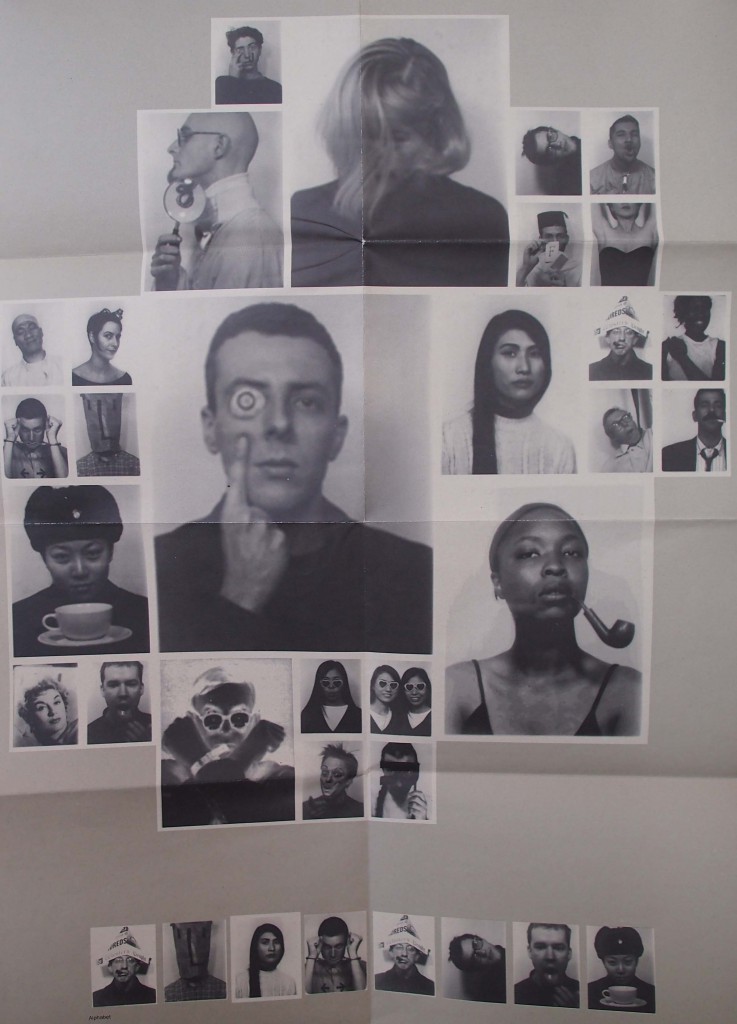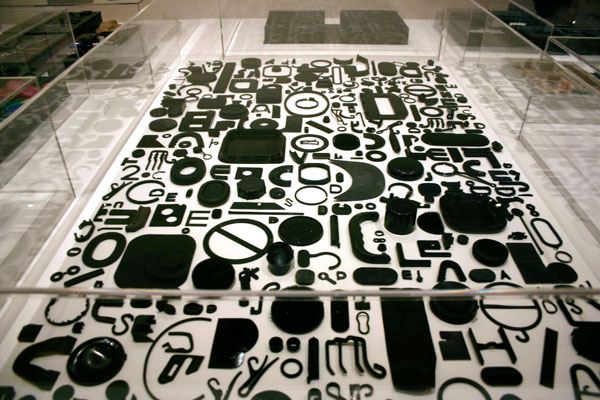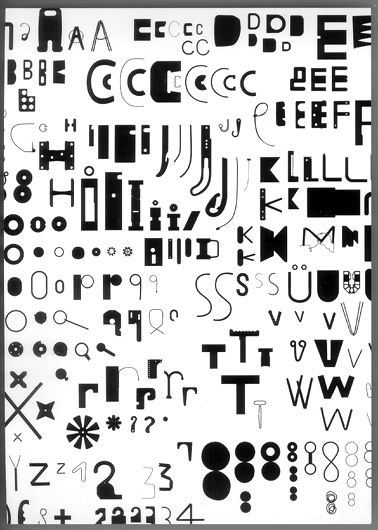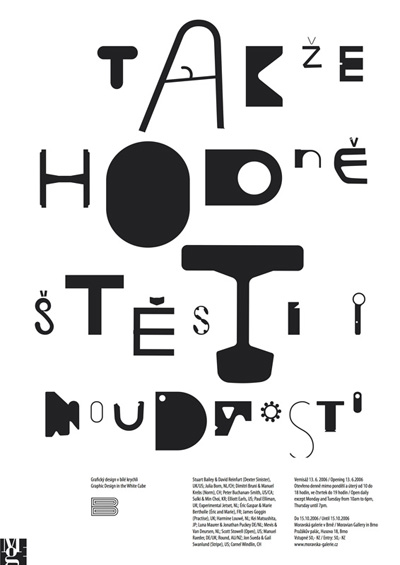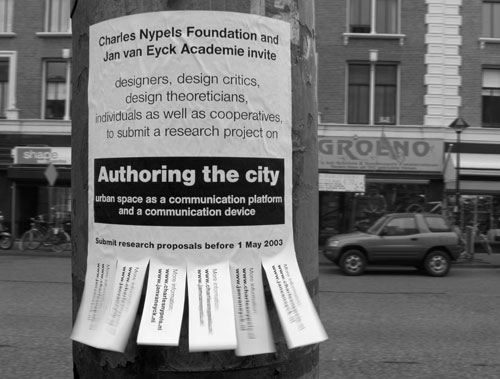If you talk about communication, you can not avoid Paul Elliman.
Paul Elliman is born in 1961 in the UK. He is a London based artist and designer, with works primarily focusing on communication and different ways of communication through language, sound and typefaces.
He is dealing with new looks and ways to use the written language. He has made a human alphabet, with people acting letters in a photo booth machine.
The original poster as Paul Elliman made it.
His work often involves collections of things. The largest project is his own font, “Found Font”, which is based on things from his everyday live. It is an ongoing project that already has been going for over 23 years.
A portion of Paul Elliman’s Found Fount, at the Museum of Modern Art’s “Ecstatic Alphabets/Heaps of Language”
Alphabet poster.
The typefaces are very strong visually and I like the ways they are breaking with normal letters.
As a font I don’t think it is adequate. For me a typeface should be easy to read. I know that some people mean that typefaces should add more to the text, by making each word telling a story beyond that of the word it self.
Every person has it own associations with a word, and will therefore not have the same story told. Furthermore the same word can have different interpretations, depending of the way it is used in a sentences.
It will only be the person who has made the font who will be able to use it in a comprehensive way.
The purpose must be to deliver a message through the written language. And if the message is lost what is then left.
As Paul Elliman’s work is still connected to the form of letters, you try to get the work to make sense by reading the communication.
So if you, like me, are a visual-spatial learner, which means that you don’t read with help from the sounds of the words but the visuality of the word, the communication is totally lost.
The words don’t look like anything you know and become impossible to read.
I really like the idea of finding letter, word and story in the objects that surrounds you in your daily life.
But I think it will work better if it completely broke with the alphabet, as we know it.
Many have tried to construct international languages through time, by using the Latin alphabet, but none of the languages have become used as a spoken language.
We live in a time where images has become a language of it’s own. I find it very interesting to find new ways of communication, and maybe in the future a written language with image letters can be useful.
Here I don’t mean typefaces like Webdings and the Wingdings family. No, I mean a new language, which is not build on the Latin alphabet or the digitization of language and the subjugation of code paged systems.
I think it could help more people to communicate if pictures could be our new alphabet.
An international language, which will be easier to learn, especially for people who have a strong Visual Literacy.
But also in the Third World, where resources are fewer. A teacher could play a less important role, because of the logic of the language. And more people could learn a written language.
Another form of communication Paul Elliman has been working with is sounds. In his performance project “Sirens Taken for Wonders“, Paul Elliman and a participating group of professionals and students explore New York’s sound of sirens. Paul Elliman likes to get as many views as he can on a certain subject and he uses a lot of research in his work.
The performances ended up in many different discussions for instance, the human thing of being curious about accidents, the sounds being both saving and danger at once and nobody notes the sirens as noisy.
An additional sound project is Paul Ellimans work with the human voice as a sign. He has, among others been engaged in the technological modulations of the voice. A normal human voice is formed from thought, language, body, and so on. But the technology makes the voice begin with something else.
We are more and more getting audio messages everywhere; on the station, in the supermarket, from the GPS, and so on.
We are used to obey the authoritarian voice, which is taking care of our whereabouts and our consumption habits.
And our consumer behavior is used to be in control of our own voice as a tool to manage all the equipment such as mobile phones, music players, cars, computer operating systems, call centers, Internet search engines such as Google.
The language of picture and icons is complementing the language of sounds very well. It fits to our busy daily life and makes us able to act on more that one situation at the time.
I ask my phone to dial my mother, while I am looking for the toilet sign, and in the same time I hear a trustworthy voice announcing the boarding of my flight.
